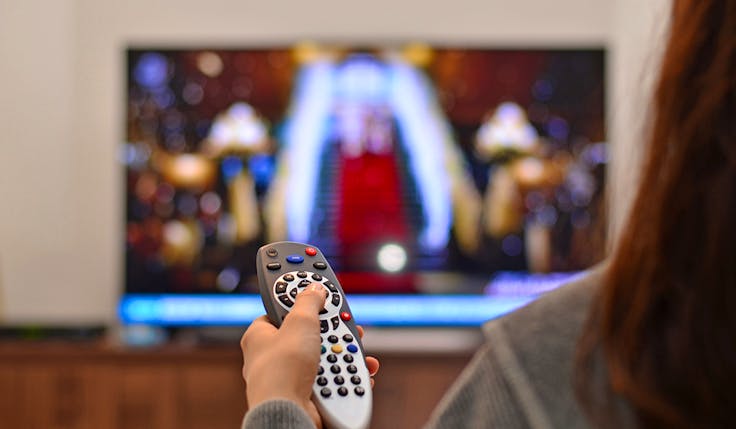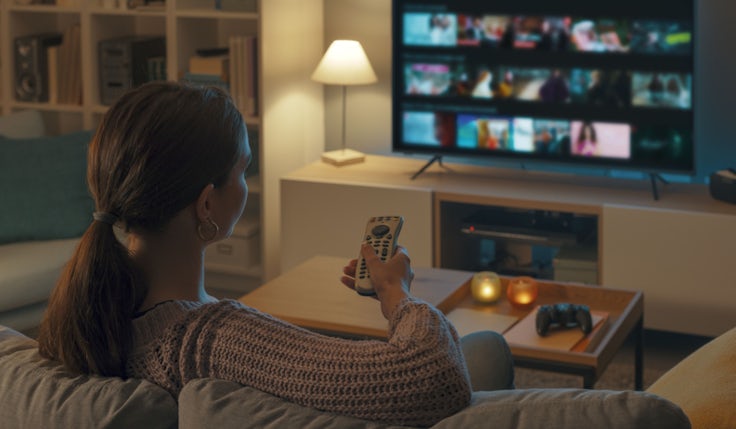TV’s effectiveness is driven by more than just price
Thinkbox highlights data that shows linear TV advertising has increased in price by 20% – not 50% – since 2019, and suggests that while price is an important factor in TV’s effectiveness there are other things to consider.
 There are few things less welcome than someone you hold in high regard saying something you not only disagree with but something you must publicly challenge – or at least contextualise.
There are few things less welcome than someone you hold in high regard saying something you not only disagree with but something you must publicly challenge – or at least contextualise.
So it’s with a heavy heart – although with thanks to Marketing Week for the opportunity – that I must respond to Dr Grace Kite’s column questioning the current value of TV advertising.
The central claim is that linear TV advertising has increased in price (by 50% since 2019) and that, as linear viewing has declined, this means TV’s payback has been undermined.
Her analysis is based on advertising pricing data from ECI. I’m not familiar with ECI’s data, but I am familiar with the industry standard advertising spend data provided by the Advertising Association and WARC. And it tells a remarkably different story.
If you factor AA/WARC spend data against Barb data for linear advertising viewing, it’s possible to calculate the average price paid for different audiences on TV.
Changes in price won’t perfectly translate to shifts in effectiveness; effectiveness is determined by a combination of the price, the impact of the ad exposure, and the reach potential of the channel.
TV advertising is priced according to supply and demand (rather than the price being set by the broadcasters), so it’s possible to calculate the average price by dividing the revenue linear TV generates (demand) by the volume of Barb-reported ad impacts (supply).
Do this and you end up with radically different figures.
This data puts the average linear TV price for a thousand adult impacts at £5.12 in 2019 and a forecast of £6.13 for 2023 – that’s a 20% increase, quite a lot less than 50%.
So something has gone wrong somewhere.
For adult ABC1s the increase is also 20%. For younger audiences, you’ll already be aware that there’s been considerably higher linear TV price inflation at 88%, but they’ve been moving at a much faster rate to on-demand viewing and are much more cost-effective to reach there. Most optimal plans for those aged 16 to 34 are very heavily weighted to broadcaster video-on-demand (BVOD) these days.
TV is cheaper in real terms
Using the AA/WARC data and Barb puts the pricing change for linear TV advertising in line with that of online video and display (assuming that ECI’s numbers for these channels are correct).
And TV’s price increase of 20% since 2019 is well behind the RPI inflation of 28% during the same period. So TV advertising is, in fact, relatively better value today than it was in 2019.
So there’s a significant question mark over the data Dr Kite is basing her claims on – and her analysis is solely looking at linear TV, not BVOD, which is rapidly growing (viewing time is up 45% so far this year, according to Barb). BVOD also has a fixed price which is much less subject to the supply and demand mechanics that affect linear.
TV is changing
The impact of subscription streaming services like Netflix has reduced the reach potential of commercial TV. Barb data across all devices puts the average weekly reach for commercial TV at 78% of the UK from January to August this year compared with 88% in 2019.
It’s less. No hiding from that. But let’s not throw the baby out with the bath water. What does that 78% mean? It means:
• 42 million people watching commercial TV every week
• Viewers watch on average over three hours a day
• £100,000 spent on linear TV reaching about 10 million people
Effectiveness – especially TV’s – is driven by more than just price
In terms of TV’s effectiveness, while price is a critical factor, there are other important nuances to consider.
Changes in price won’t perfectly translate to shifts in effectiveness; effectiveness is determined by a combination of the price, the impact of the ad exposure, and the reach potential of the channel.
TV remains keenly priced, and the power of TV spot advertising – with its incredibly high completion rates; unmatched attention levels; high levels of trust; long-term effects; costly signals from appearing alongside high-quality content on the big screen in viewers’ front rooms and so on – means TV remains uniquely placed to deliver impactful ad exposures to mass audiences.
Don’t accept it unquestioningly, but TV’s role as the beating heart of an effective campaign endures. It makes other channels work harder because of its unique, scaled qualities and we continue to see incredible success stories from brands that get the most out of TV’s effectiveness potential.
Look at Yorkshire Tea, which has become the market leader; or Boots, which used the targeting potential of BVOD to turn around their sales performance; or Abbott Lyon, the personalised jewellers, which used TV advertising for the first time and saw a huge surge in sales.
Nothing works harder than TV advertising.
Matt Hill is research and planning director at Thinkbox






Comments